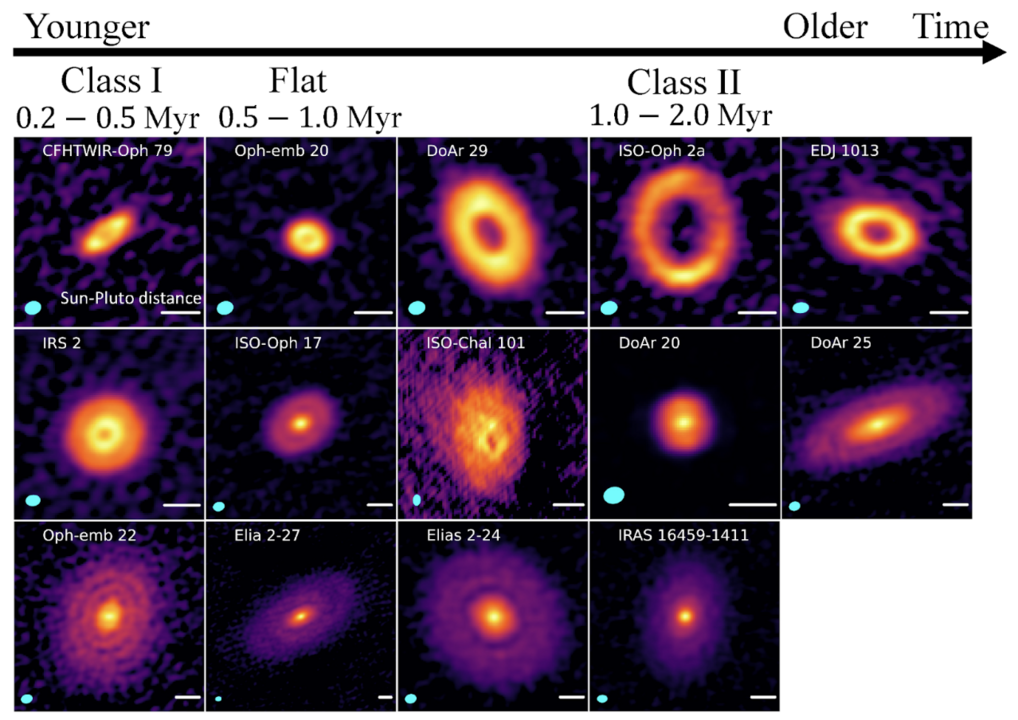Astronomers using the Keck Observatory on Maunakea in Hawaii have captured the closest ever view of a protoplanetary disk, the swirling cloud of gas and dust where planets form from interstellar debris. Their target, a young star called HD 34282 located 400 light years away, offers a front row seat to planetary birth.
The observations form part of a survey with perhaps astronomy's most memorable acronym - SPAM, or The Search for Protoplanets with Aperture Masking. Christina Vides, a graduate student at UC Irvine who led the study published in The Astrophysical Journal, and her colleagues have observed thirty young stellar systems so far, hunting for the elusive stage when gas and dust first condense into planetary cores.
 The domes of the Keck Observatory used to study HD 34282 (Credit : T. Wynne / JPL)
The domes of the Keck Observatory used to study HD 34282 (Credit : T. Wynne / JPL)
Finding actual protoplanets remains extraordinarily rare. Only two have ever been directly imaged; PDS 70 b and PDS 70 c, both discovered in 2020 using the same Keck instrument. The technical challenge is formidable. Young planets glow faintly from the heat of their formation, but they're embedded in brilliant disks that vastly outshine them. Extracting a planet's signal from its natal environment requires exceptional angular resolution and sophisticated image processing.
 The evolutionary sequence of protoplanetary disks with substructures (Credit : NRAO/AUI/NSF)
The evolutionary sequence of protoplanetary disks with substructures (Credit : NRAO/AUI/NSF)
Vides and her team employed Keck's Near Infrared Camera, NIRC2, combined with adaptive optics that compensate for atmospheric distortion. The technique resolves features just a few astronomical units from the star, regions that would appear as a single blurred point through conventional imaging. At HD 34282, this revealed intricate structure in the disk's inner regions.
The observations show what is known as a transition disk. An inner envelope of dust surrounds the star directly, followed by a gap roughly 40 astronomical units wide, about the distance from the Sun to Neptune. Beyond this cleared zone lies the main protoplanetary disk. That gap is significant. Theory predicts that growing planets sweep their orbits clear as they accumulate mass, gravitationally attracting nearby material and leaving an empty lane in their wake.
The team also detected clumpy structures and brightness variations within the disk. These asymmetries hint at gravitational perturbations, exactly what you'd expect if a massive object were pulling material toward itself. Yet no definitive protoplanet emerged from the data. The disk's scattered light simply overwhelms any planet that might be lurking there.
Despite the ‘non detection,’ the observations advanced understanding considerably. By modelling the disk's structure in detail, the researchers constrained where a planet could hide and how massive it might be. They also measured the speed at which material spirals onto the star from the disk, parameters that are crucial for modelling how the system will evolve.
 The NIRC2 image of dust around HD34282 (left.) The light from the star is removed and its location is marked with a star symbol in all panels. The model that reproduces the data (middle) includes a circular inner structure around the star, which may be an envelope of dust. There is also a large protoplanetary disk around both the star and the inner structure. On the right is the image of the model after it is passed through the algorithm used on the left. This is done to test if the model can visually reproduce the data (Credit : Christina Vides / University of California Irvine / W. M. Keck Observatory)
The NIRC2 image of dust around HD34282 (left.) The light from the star is removed and its location is marked with a star symbol in all panels. The model that reproduces the data (middle) includes a circular inner structure around the star, which may be an envelope of dust. There is also a large protoplanetary disk around both the star and the inner structure. On the right is the image of the model after it is passed through the algorithm used on the left. This is done to test if the model can visually reproduce the data (Credit : Christina Vides / University of California Irvine / W. M. Keck Observatory)
The work demonstrates how studying protoplanetary disks informs the search for planets themselves. By accurately modelling and subtracting the disk's contribution, astronomers can push detection limits deeper. Previous modelling of HD 34282 improved planet detection sensitivity by a factor of two in brightness and about ten Jupiter masses in potential planetary mass.
The SPAM survey continues. Vides and collaborators are systematically observing young stars with promising disks, building a statistical sample of planet formation environments. They're also preparing for SCALES, a next generation high contrast imager being developed for Keck Observatory that will offer unprecedented sensitivity to faint companions embedded in bright disks.
Source : Astronomers reveal tasty insights into exoplanet formation using SPAM

